Requirements
Partner Introduction and Project Background
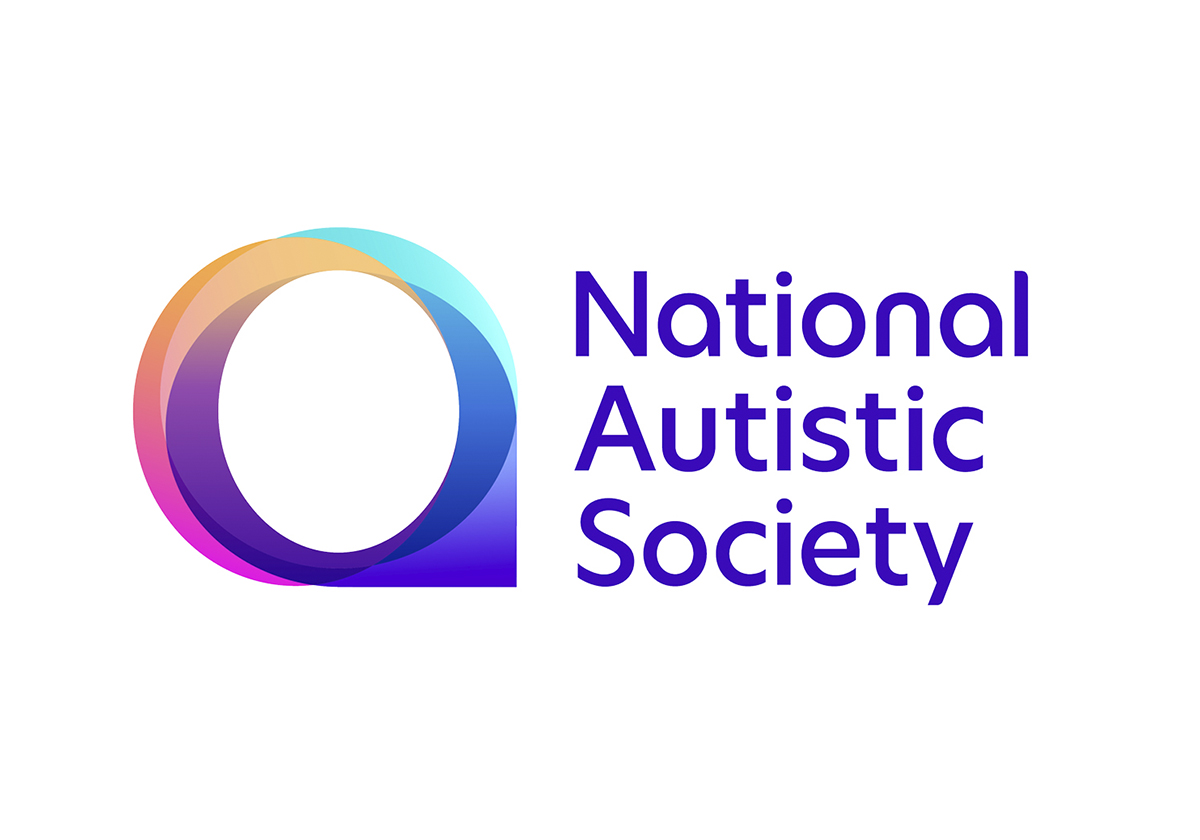
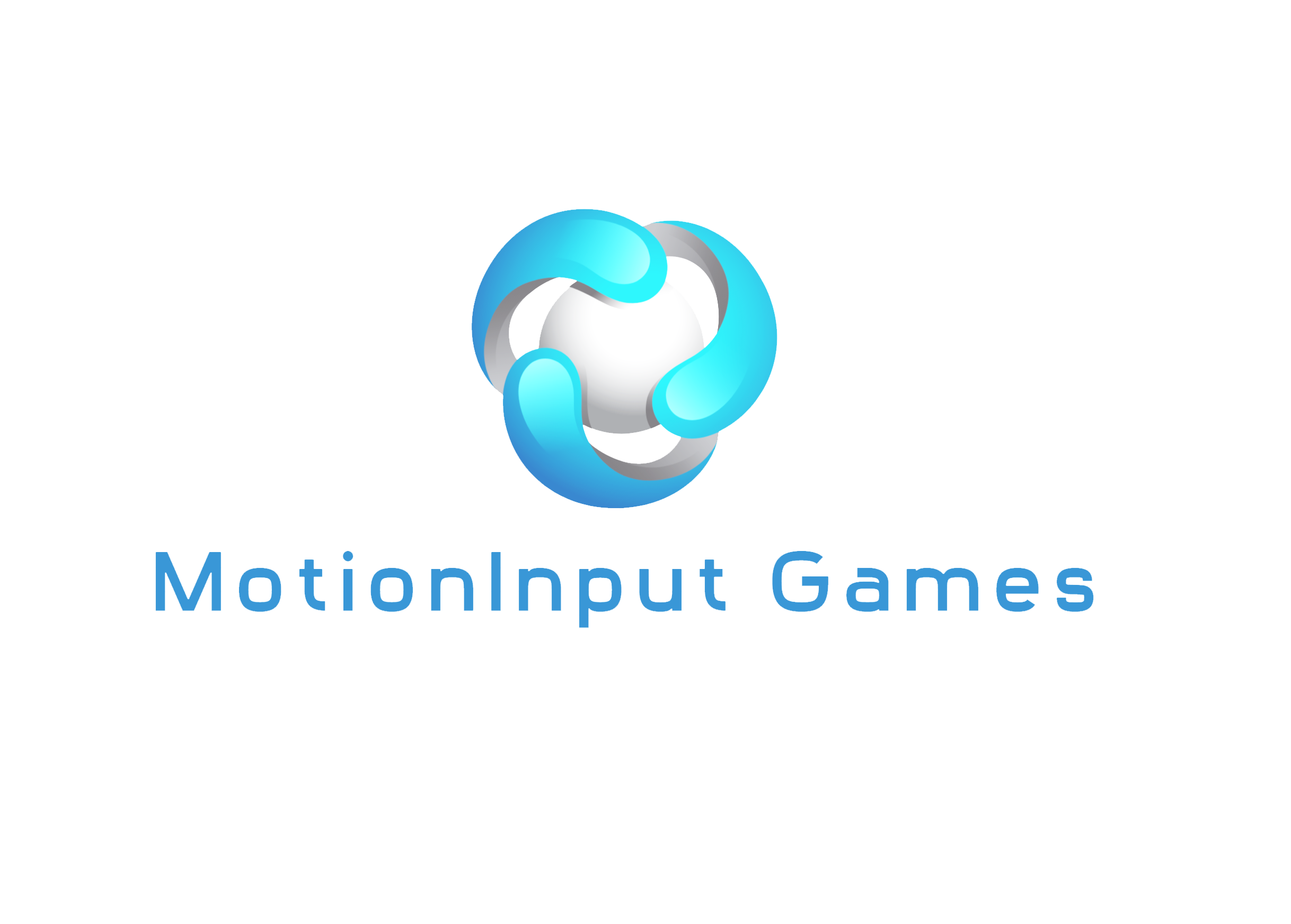
Our project is a collaboration with the National Autistic Society (NAS) and the MotionInput team at UCL. The NAS is a leading charity dedicated to supporting autistic individuals, advocating for their needs, and creating more inclusive environments. Their expertise in neurodiversity ensures that our game is designed with accessibility and engagement in mind.
The MotionInput team at UCL specializes in cutting-edge gesture recognition technology. Their MotionInput system enables users to interact with digital environments using only body movements, eliminating the need for controllers. This innovative approach makes our game more immersive and accessible for neurodivergent children, allowing them to enjoy virtual winter activities in a way that feels natural and intuitive.
By combining the expertise of NAS and the technological advancements of the MotionInput team, Superhero Sportsday: Winter Edition creates a safe, engaging, and interactive space where children can experience the magic of winter sports without sensory overload or accessibility barriers.
Project Goals
Superhero Sportsday: Winter Edition is designed to enable neurodivergent children to experience the joy of winter sports in a safe, accessible, and engaging virtual environment. Traditional activities like skiing, ice skating, and sledding can be physically or sensory-challenging, requiring specialized equipment, travel, and tolerance for unpredictable weather. Our project removes these barriers, allowing children to enjoy winter sports from the comfort of their homes or designated play spaces.
Powered by MotionInput technology, the game replaces traditional controllers with natural, intuitive movements—such as mimicking paddle strokes to steer a kayak or moving their legs to skate. This ensures that every child, regardless of mobility level or sensory sensitivity, can participate without frustration.
Our mission is to create an inclusive digital playground where children can develop motor skills, build confidence, and explore winter sports at their own pace. By eliminating physical and environmental obstacles, Superhero Sportsday: Winter Edition makes winter sports more accessible, interactive, and enjoyable for neurodivergent children everywhere.
Requirement Gathering
To ensure Superhero Sportsday: Winter Edition meets the needs of children, we gathered requirements through bi-weekly partner calls, user testing days, and key events such as the AI for Good Showcase on March 11th and a visit to Helen Allison School on March 4th. These interactions allowed us to refine accessibility features, gameplay mechanics, and user engagement. During the school visit, we observed how children interacted with motion-based controls, while the showcase provided expert feedback to improve inclusivity.
Although our primary approach relied on direct engagement, we also collected structured feedback through surveys and observational analysis during testing sessions. These surveys focused on ease of interaction, comfort levels, and overall engagement. The data was analyzed to identify common challenges, improve motion detection accuracy, and ensure an accessible, enjoyable experience for all users.
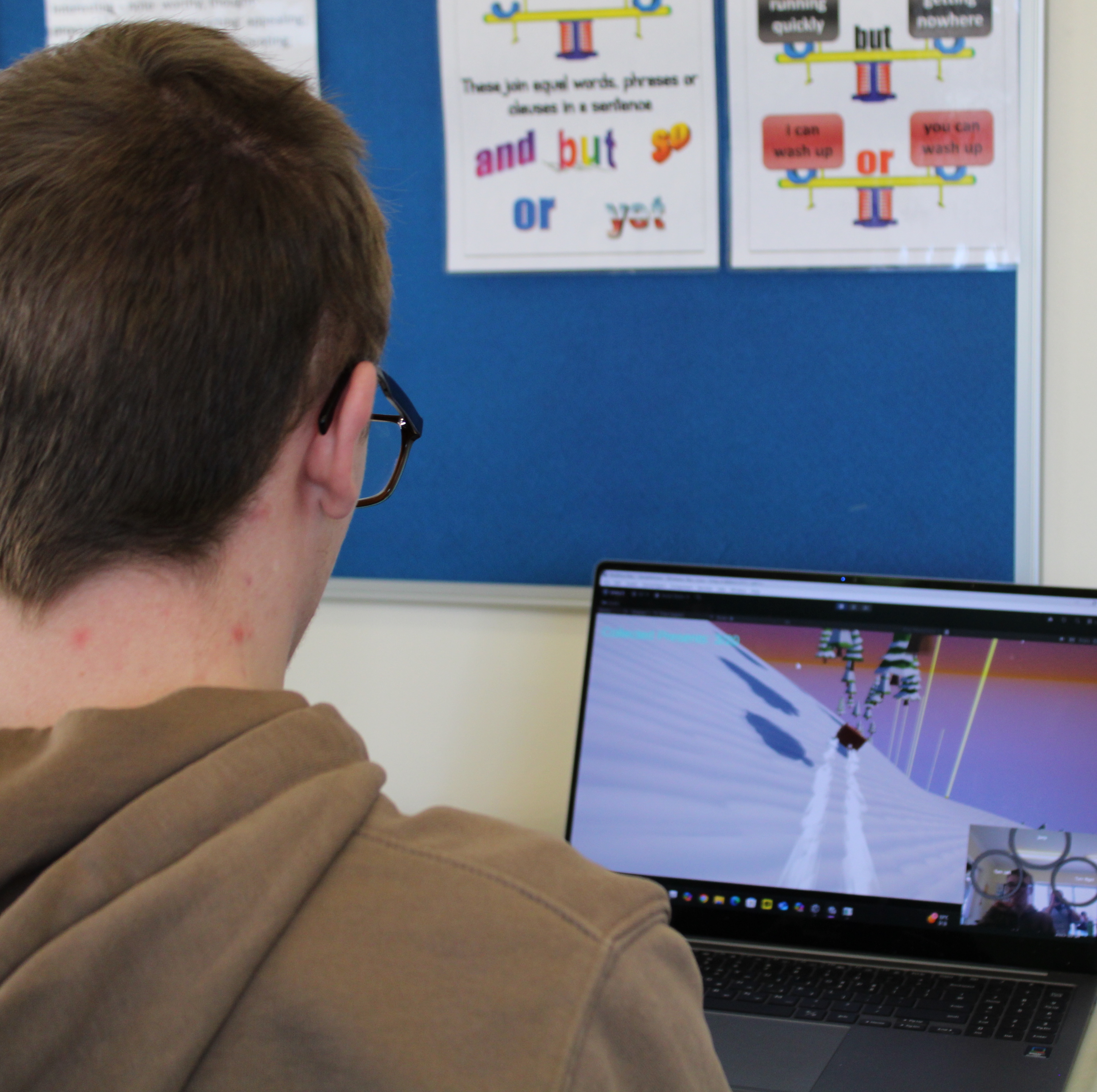
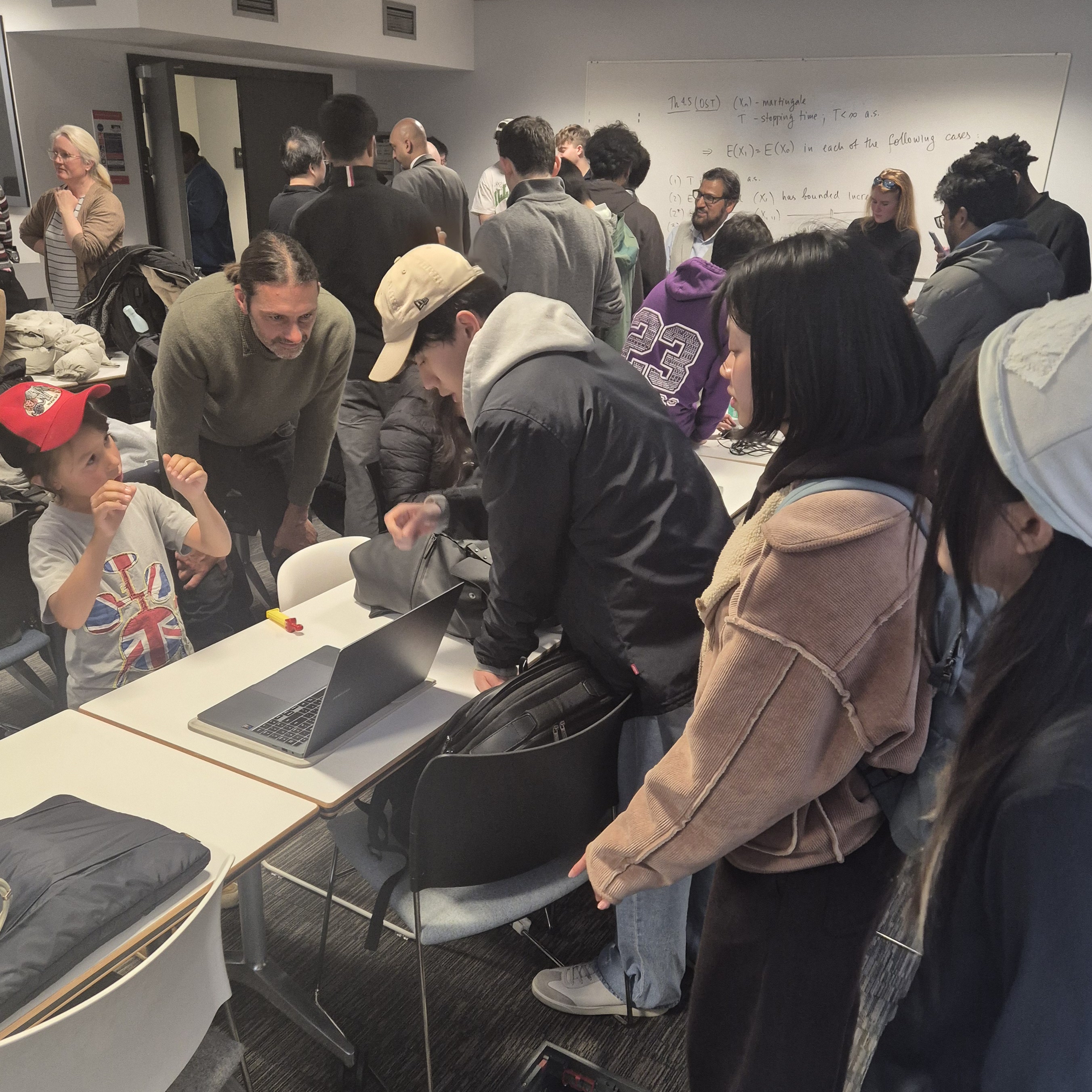
Personas
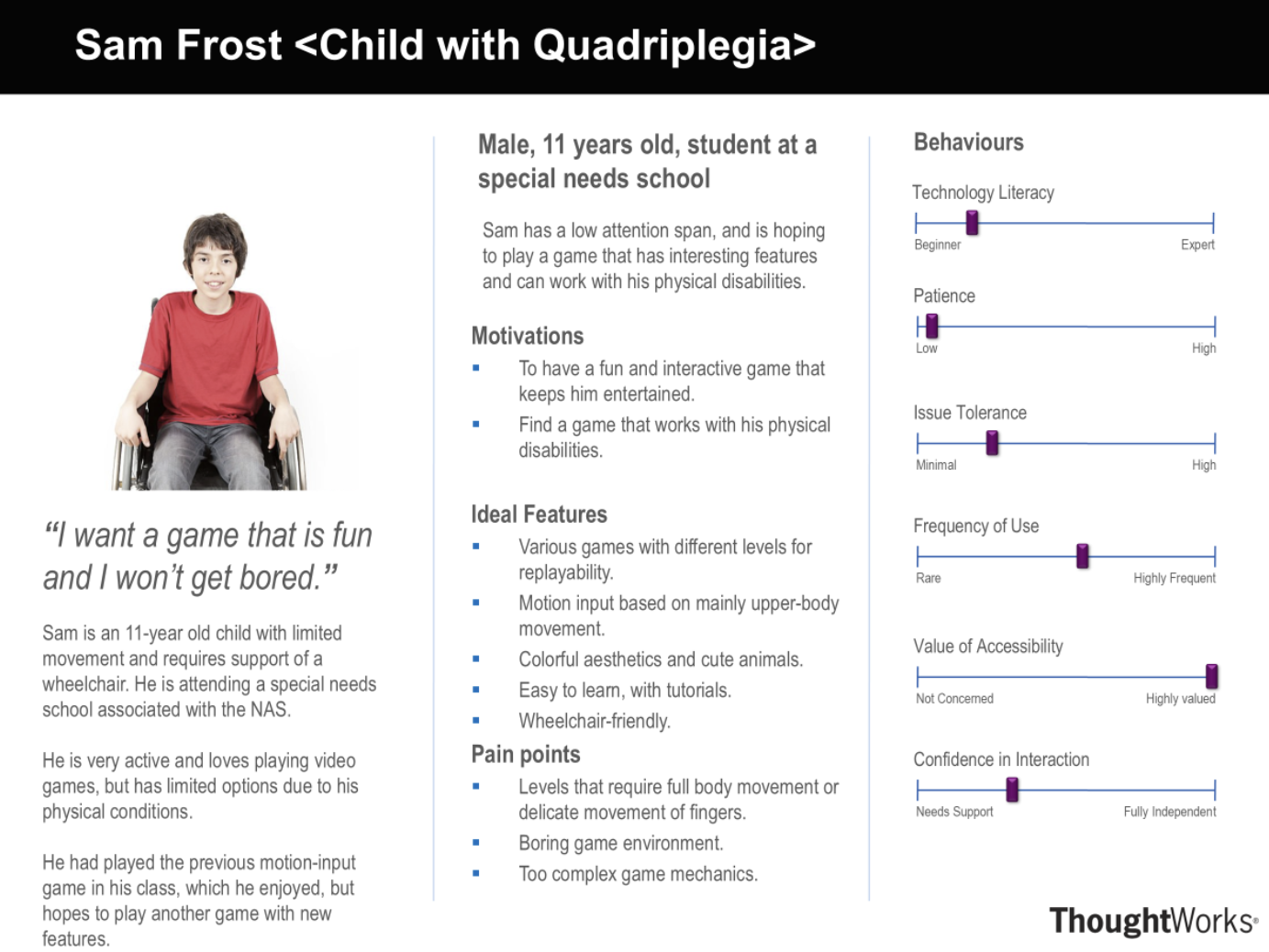
Sam Frost (Quadriplegia Patient)
Sam is an 11-year old boy who has quadriplegia. He has difficulty moving his lower half of his body and fingers. He loves games, but only has limited options due to his physical condition and hopes to find more games that work for him.
Sam is currently looking for a new game, one that features various levels that he can play without much lower body movement, and has beautiful visual effects to keep him entertained. Alongside, he hopes to appreciate the scenery of the levels and cute animals within.
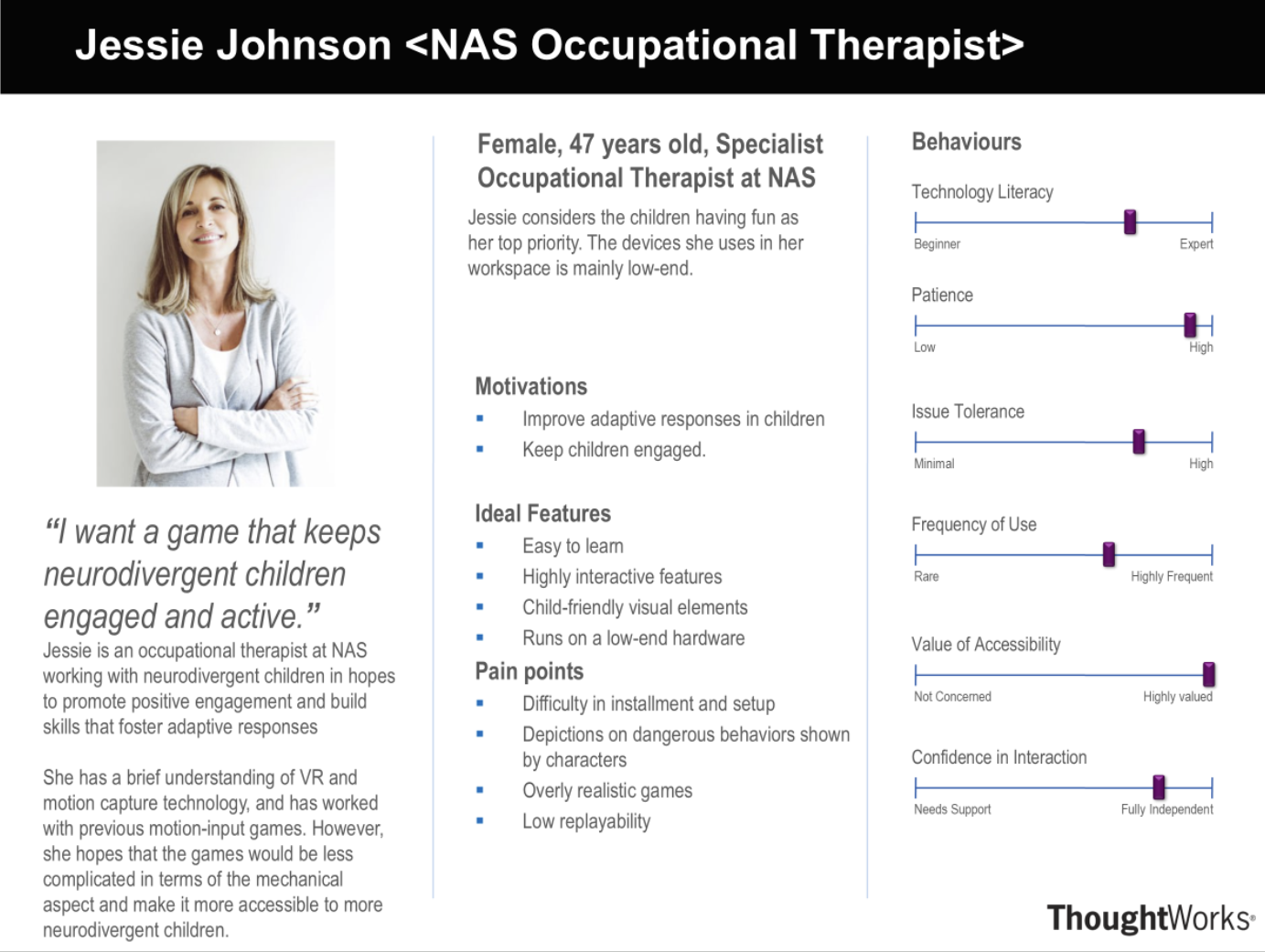
Jessie Johnson (NAS Occupational Therapist)
Jessie is an occupational therapist working in NAS. Her job is to elicit positive adaptive responses from neurodivergent children through a variety of methods, one of them being through motion input games to develop cognitive and motor abilities. Jessie has worked with games before and found it meaningful for the children.
She hopes that it will be beneficial for the children to experience a new game, and also wishes to negate some of the other games limitations such as too complex mechanism and realistic graphics. Jessie wants a new game to provide a wider variety of games the children can choose from that will promote positive engagement and build skills that foster adaptive responses.
Use Cases
| ID | Scenario | Preconditions | Test Steps | Expected Outcome | Status |
|---|---|---|---|---|---|
| 1 | MotionInput detection for skiing | Camera enabled, user in a clear space | 1. Player moves arms like skiing poles 2. Game detects movement 3. Character moves forward |
Character moves in sync with user’s motion | Pass |
| 2 | Game starts properly | System meets minimum requirements | 1. Launch the game 2. Select level 3. Game loads correctly |
Game starts without errors and reaches the menu | Pass |
MoSCoW Requirement List
Functional
| ID | Requirements | Priority |
|---|---|---|
| 1 | The game should detect and interpret user movements to control in-game actions | Must have |
| 2 | The game should include a variety of interactive sports and activities (8 different sports) | Must have |
| 3 | Provide performance insights to encourage skill development and engagement | Should have |
| 4 | Provide remaining time and score more effectively to indicate their current progression | Should have |
| 5 | Include a narrative or progression video or system to make the experience more engaging | Could have |
| 6 | Option for children to play together or under the guidance of therapists or guardians | Could have |
| 7 | Children can access the MotionInput settings. | Won’t have |
Non-functional
| ID | Requirements | Priority |
|---|---|---|
| 1 | MotionInput technology should accurately detect user movements with minimal lag | Must have |
| 2 | No sensitive user data should be stored or transmitted without consent | Must have |
| 3 | The game should have minimal delays to ensure real-time response to user movements | Should have |
| 4 | The game should run efficiently even on older or budget-friendly hardware | Should have |
| 5 | Settings for adjusting sounds and colors to accommodate sensory needs | Could have |
| 6 | The game could dynamically adjust difficulty based on the child’s interaction patterns | Could have |
| 7 | Children have to log in to their account before playing the game | Won’t have |
